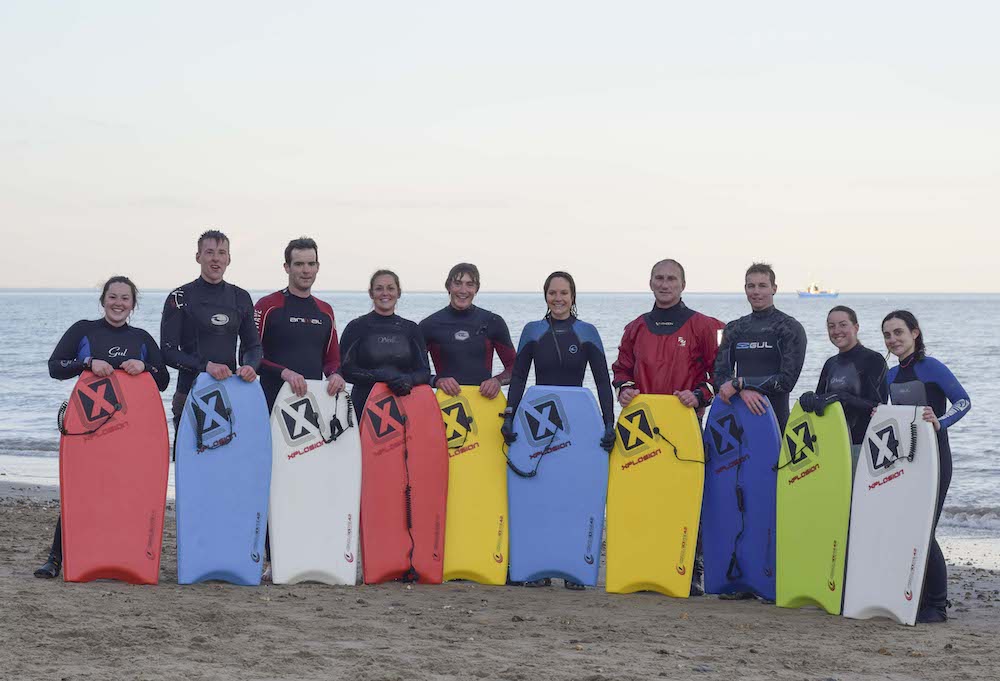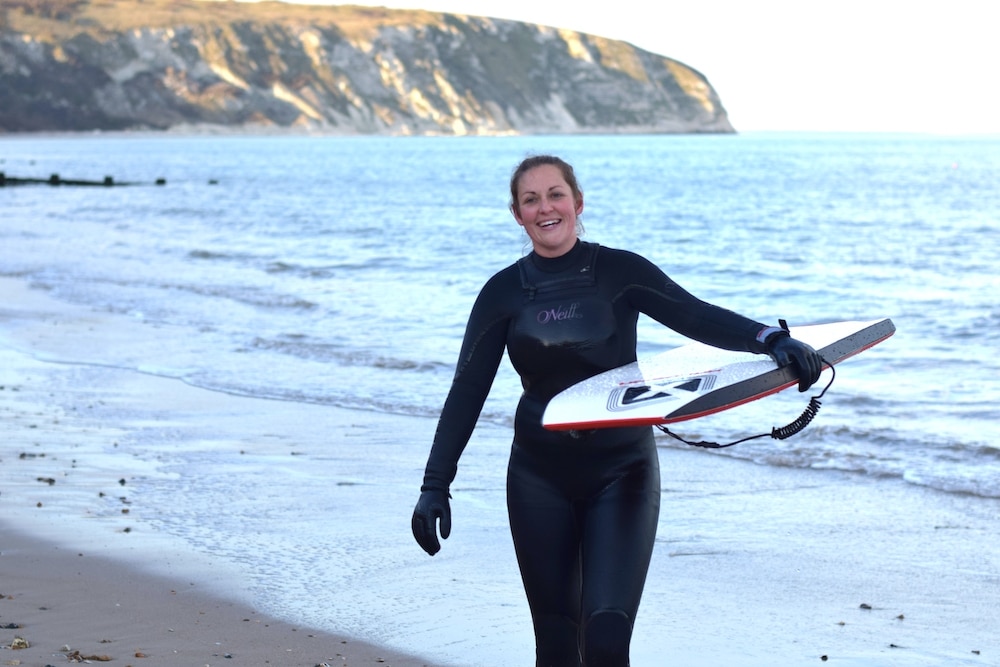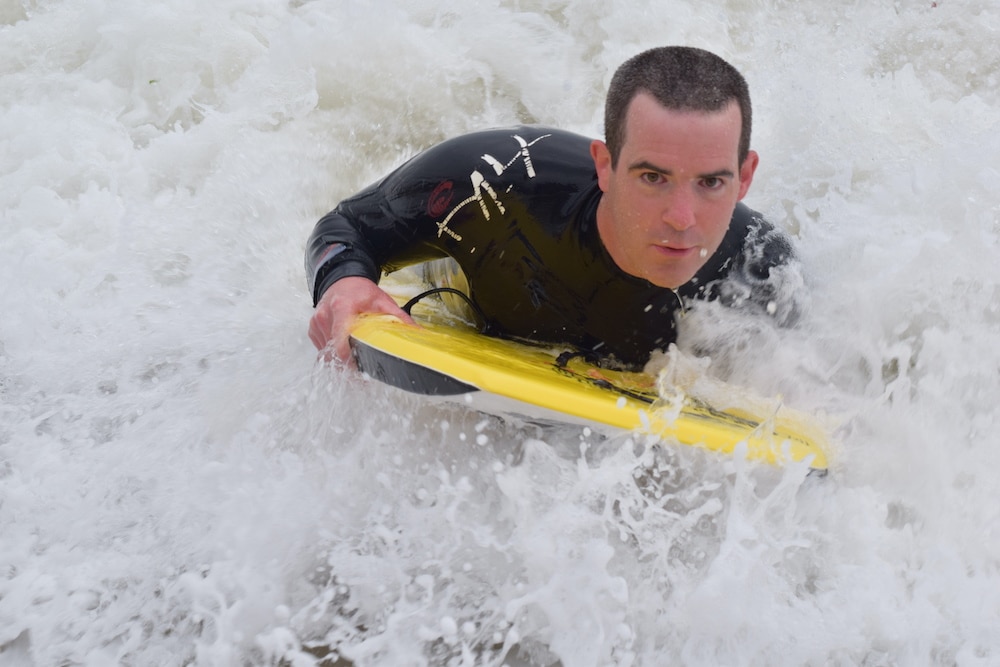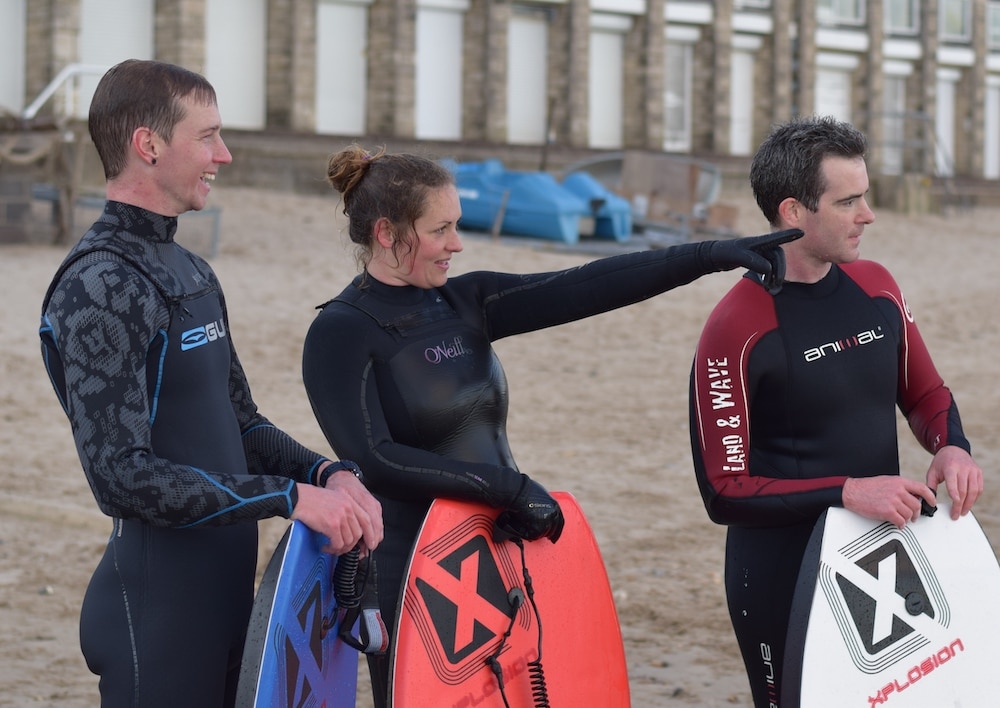Finding the Correct Wetsuit for you
Brace yourself for a whole load of information on everything you need to know before buying a wetsuit! Many considerations need to be taken into account to help find the right one for you. We have included all of our top tips in this post to help you know what to look for and what to think about before taking the plunge.
Ultimately, the end goal is to be a good temperature and comfortable whilst partaking in whatever activities you plan to be wearing your wetsuit for. If you get an ill-fitting wetsuit or end up borrowing your mate’s uncle’s wetsuit he used for waterskiing over 40 years ago, you may feel as though you are heading into battle wearing a full suit of armour. Not ideal coasteering when attempting to delicately negotiate your way onto sharp rocks from the water! So let’s get started…
Size and fit
Wetsuits will help to keep you warm but will not keep you dry. In fact, they work by trapping a small layer of water between your body and the neoprene material which your body heat gradually warms up. In turn, this warm layer of water trapped in the suit becomes an insulating layer and protects your body heat from being sucked out of you by the cold water you are playing in.
With this in mind, it is vital that you get the size and fit of your wetsuit absolutely right. If it’s too loose with baggy patches or hangs off of you like a tracksuit then the material wont be able to work its magic. Instead the wetsuit will be flushed out with fresh cold water constantly. At this point, you may as well be wearing nothing at all!!
Equally, if you wear a wetsuit that is too tight it can restrict circulation which will be counter-productive. Lack of blood flow will cause your extremities to become very cold.
Look for a wetsuit that is a snug fit but not too snug that your eyes are popping out of your head cartoon style! When looking for the right size it’s worth using the manufactures size chart as sizing does vary massively.

Entry styles – How you put it on
There are three different entry styles of wetsuit to consider: back, chest and zip free.
Back – Although the nice long zip at the back makes this ‘old but gold’ traditional entry style the easiest to get into, it does have its drawbacks. They can be prone to causing unwanted flushing due to the stiff nature of the zip. You may get the occasional unwelcome rush of cold water down your back! This part of the wetsuit also doesn’t stretch which affects the overall flexibility and can be restrictive.
Chest – The short zip across the chest does away with both issues you’ll experience with back zipped wetsuits. This entry style creates a more flexible suit and therefore better range of movement. With no back zip, they have a much better designed seal around the neck which also helps prevent flushing.
They do come with reduced ease of access though. At first it may seem impossible that you will be able to get your whole body through such a small chest hole…
Once you work out the very specific song and dance you have to perform to don your suit, it’s not too much bother. Until then, just be prepared for quite a testing workout before you’ve even got near the water!
Zip Free – If you want to take one step further, there are wetsuits without any zips at all, meaning super mega flexibility, movement and seals. This style of wetsuit is made from stretchy high-end neoprene which allows entry through the neck.
As with all things mega high-end, you do have to pay for it. They are much more expensive than back and chest entry wetsuits.

Stitches and seams
Wetsuits, like most items of clothing, are made from multiple panels of material joined together to form the shape of the garment. The seams can be a weak point of the suit and also an entry point for water to leak through. Understanding the various ways in which the neoprene panels are stitched together and knowing the pros and cons of each style of stitching is important when searching for your perfect wetsuit:
Overlock – found mostly on more low budget (but cost effective) wetsuits, the neoprene panels are stitched together with the joining edges rolled inwards. This creates a bit of a lump the length of the seam which can be uncomfortable and is not as strong as the other stitching styles below.
Flatlock – stronger than overlock, the panels overlap slightly and the stitches pass straight through both layers. This does leave holes all the way through the neoprene and so will allow water to seep through. This type of stitching is not as efficient for keeping you warm in the Winter.
Blind stitch – the strongest of the three main stitching styles, two panels are glued together edge to edge then stitched with a curved needle passing partially through both panels. This creates a very strong and water tight seam.
There are also a few upgrades you might find on higher end suits which seal and strengthen the stitching:
Glued – panels can be glued as well as stitched. This increases watertightness and strength of the seam.
Taped – some wetsuits will have ‘taped’ seams. A process where tape is glued to the inside of the wetsuit to make it waterproof. This helps to strengthen the seams for extra durability. Some suits will have all seams taped, whereas others will be taped only on the seams that will come under the most stress.
Welded/Liquid Taped – there are a few terms that manufactures will use to describe this style, but in essence it is coating the seams in liquid rubber.
This makes the seams completely water tight. Again, this will be done to differing degrees and some suits will have it on the outside only, whilst others will have it on both the inside and outside.

Single or double lined neoprene?
This is a long story involving tons of science including thermal conductivity, evaporation removing latent heat etc etc… and you have already fallen asleep. Let’s keep it short – there are double lined wetsuits which are durable, thick and spongy and there are single lined wetsuits which have a smoother and shinier look.
Single lined wetsuits are hands down a more effective suit against cold temperatures, especially on windy days. However, they are normally the more expensive option and are very delicate. I
f you are wearing a single lined wetsuit for coasteering or canyoning for example, with lots of rock contact when getting in and out of the water or sliding over rocks on your bum, you might not have much of a suit left by the end of its first outing!
Double lined wetsuits, although not quite as efficient as single lined, hold up better against hard/rough surfaces. Having said that, as long as you wear a suit of appropriate thickness, double lined will still keep you more than comfortable through winter conditions.

Thickness
Wetsuit thickness is measured in millimetres. It’s nice and simple – the thicker the suit, the warmer you will be. What thickness you would need depends on the conditions you will be going out in i.e. temperature in and out of the water, wind chill and personal resistance to the cold.
You may find wetsuits with two different measurements as the thickness of the body/torso can be different to the thickness of the arms and legs. For example, a 3/2 will indicate 3mm of neoprene covering the body and 2mm covering the arms and legs.
Be aware that it is possible to go too thick! Wearing a 5/4 in the middle of summer on a scorching day could easily end up with you desperately ripping your suit off, a sweaty mess, after 10 minutes of activity.

Shapes
As well as thickness, the shape of a suit is another consideration. They come in many variations: short arms/short legs (also known as a ‘shortie’), short legs/long arms, long legs/short arms and even short legs/no arms.
In the Winter time a thick full body wetsuit is essential, covering as much skin as possible. Whereas in late Summer on a pleasant day a shortie might be more than enough to keep you warm. Do bear in mind neoprene will help protect your skin against abrasions and sunburn, so if you go for a shortie remember to think about the protection your skin needs!

Accessorise!
As well as a wetsuit, you might want to think about what other products will help keep you warm and protected on the water.
Head – Some wetsuits come with an inbuilt hood. If you are predominantly using yours for the coldest of days, this is a great feature but if you are using it for a range of conditions you might not want it flapping around your neck if you don’t need it. In this case you may wish to buy a wetsuit hood separately. Some outdoor instructors don’t like hoods for activities such as windsurfing or sailing, myself included. I like to feel the wind on my massive ears! Having said that, for activities that don’t require wind awareness, my massive ears appreciate the extra warmth and protection!
Feet – Wetsuit booties keep your feet warm in the same way a wetsuit does. They also protect your feet from sharp surfaces/objects. One thing to consider with booties is what is the role of your feet in the activity? For paddleboarding or surfing for example, you might want a thinner sole to help feel the board underfoot. For coasteering or kayaking, a thicker/sturdier sole will help protect against razor sharp shells, rocks or stepping on a rogue pebble which can be the most painful fate to befall anyone.
Hands – Gloves and mitts can be lifesavers in the cold, especially for people with poor circulation. The amount of extra surface area around your fingers means they are especially susceptible to the cold.
Firstly, wearing an appropriate wetsuit will help keep your hands warm as the blood coming from your body down your arm and into the fingers will be warmer. If your core and arms are cold, your hands haven’t got much hope!
There are a few other options for extra hand protection: full gloves, fingerless gloves, mitts and mitts without palms. Mitts with no palms? What use are they? They are ideal for when you are required to grip an object, for example a windsurf boom or kayak paddle.
When gripping an object in full gloves the material between your hand and what you are holding affects the sensitivity of touch and can cause you to grip too hard, and ultimately forearm cramps!

Care
Salt water and UV from the sun is absolutely devastatingly destructive to pretty much anything when exposed for long enough. Wetsuits are no exception to this. Not to mention the smells and bacteria which get absorbed into the material from general use as well. As with all things, neoprene lasts longer when it is taken care of.
It’s very important to thoroughly rinse your wetsuit and accessories after each use to remove any sand or mud followed by a real good dunking. This should be done with fresh cool water. Make sure you pay particular attention to any zips to keep them from seizing up before hanging them out to dry.
Always hang wetsuits from the waist, letting the arms and legs both hang low. If you hang it like a shirt from the shoulders it will stretch the suit and lead to damage. You can leave to dry indoors or outdoors but not in direct sunlight. If you want to give the wetsuit a more thorough wash than just a rinse, there are wetsuit shampoo products you can buy.
If you use your wetsuit enough it will likely pick up a bit of damage here and there, but don’t panic! There are products available to help patch up small holes and the like. If you think you will be sitting on sharp rocks maybe wear some board shorts over the top of your wetsuit to prevent damage where possible.
Without getting too hung up on the destruction of your brand new and carefully picked out wetsuit, on purchase do find out about warranty cover. There won’t be much coverage for wear and tear but if the stitching starts deteriorating, you could be covered by the retailer or brand warranty.

Shopping
You are most likely feeling overwhelmed with so much information and so many things to consider, but what you should be able to do now is make informed choices on what you want to get out of your wetsuit. As you may have worked out, it’s going to be hard to get a four seasons, all conditions covered wetsuit. So if you plan to be soaking wet all year long it might be worth saving the pennies and getting a couple of wetsuits to ensure all yours bases are covered.
Now it’s time to get to a shop and try some on some wetsuits. Be prepared for a workout. Struggling in and out of a bunch of wetsuits isn’t the easiest task and definitely isn’t considered ‘retail therapy’. Be warned, a wetsuit in a shop changing room will do absolutely nothing for you, so make sure to do some mental preparation beforehand so that you are ready for all those tiny flaws you hate so much to be on show. Don’t worry – we all look like clumsy seals once zipped up – we are all in it together!
Happy shopping and happy adventures!




